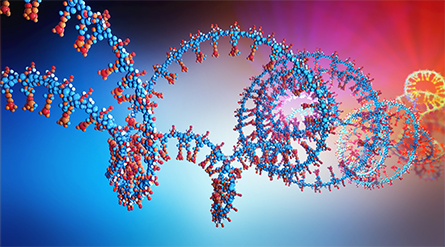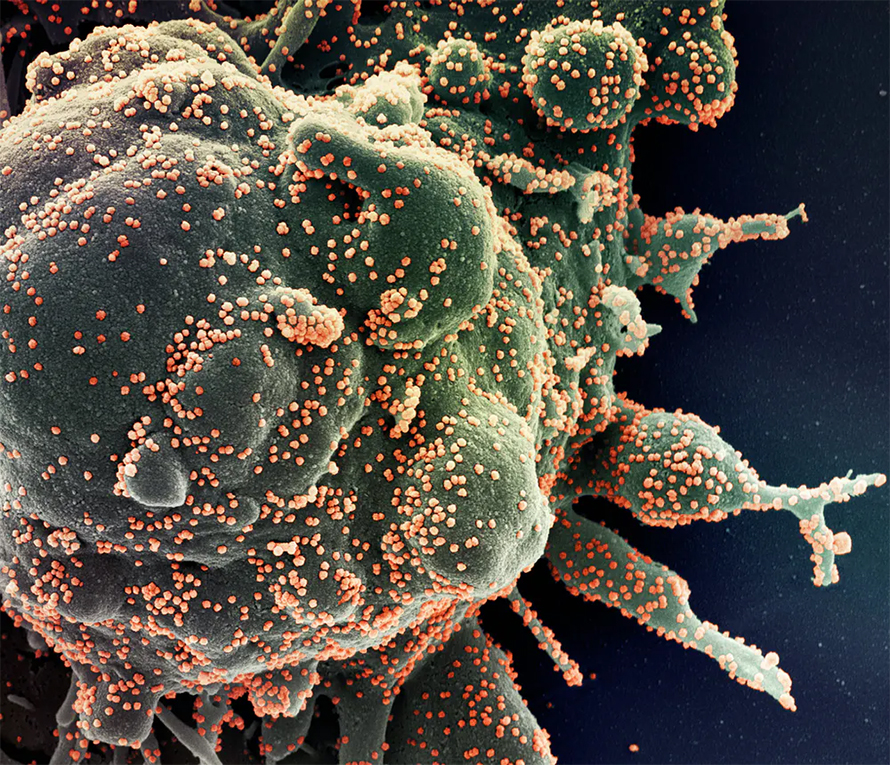Machine learning plus insights from genetic research shows the workings of cells
We combined a machine learning algorithm with knowledge gleaned from hundreds of biological experiments to develop a technique that allows biomedical researchers to figure out the functions of the proteins that turn genes on and off in cells, called transcription factors. This knowledge could make it easier to develop drugs for a wide range of diseases.

here are key to understanding the inner workings of cells.
Early on during the COVID-19 pandemic, scientists who worked out the genetic code of the RNA molecules of cells in the lungs and intestines found that only a small group of cells in these organs were most vulnerable to being infected by the SARS-CoV-2 virus. That allowed researchers to focus on blocking the virus’s ability to enter these cells. Our technique could make it easier for researchers to find this kind of information.
The biological knowledge we work with comes from this kind of RNA sequencing, which gives researchers a snapshot of the hundreds of thousands of RNA molecules in a cell as they are being translated into proteins. A widely praised machine learning tool, the Seurat analysis platform, has helped researchers all across the world discover new cell populations in healthy and diseased organs. This machine learning tool processes data from single-cell RNA sequencing without any information ahead of time about how these genes function and relate to each other.
Our technique takes a different approach by adding knowledge about certain genes and cell types to find clues about the distinct roles of cells. There has been more than a decade of research identifying all the potential targets of transcription factors.
Armed with this knowledge, we used a mathematical approach called Bayesian inference. In this technique, prior knowledge is converted into probabilities that can be calculated on a computer. In our case it’s the probability of a gene being regulated by a given transcription factor. We then used a machine learning algorithm to figure out the function of the transcription factors in each one of the thousands of cells we analyzed.
We published our technique, called Bayesian Inference Transcription Factor Activity Model, in the journal Genome Research and also made the software freely available so that other researchers can test and use it.
Why it matters
Our approach works across a broad range of cell types and organs and could be used to develop treatments for diseases like COVID-19 or Alzheimer’s. Drugs for these difficult-to-treat diseases work best if they target cells that cause the disease and avoid collateral damage to other cells. Our technique makes it easier for researchers to home in on these targets.

What other research is being done
Single-cell RNA-sequencing has revealed how each organ can have 10, 20 or even more subtypes of specialized cells, each with distinct functions. A very exciting new development is the emergence of spatial transcriptomics, in which RNA sequencing is performed in a spatial grid that allows researchers to study the RNA of cells at specific locations in an organ.
A recent paper used a Bayesian statistics approach similar to ours to figure out distinct roles of cells while taking into account their proximity to one another. Another research group combined spatial data with single-cell RNA-sequencing data and studied the distinct functions of neighboring cells.
What’s next
We plan to work with colleagues to use our new technique to study complex diseases such as Alzheimer’s disease and COVID-19, work that could lead to new drugs for these diseases. We also want to work with colleagues to better understand the complexity of interactions among cells.
This article is republished from The Conversation under a Creative Commons license. Read the original article.
![]()
Enjoy reading ASBMB Today?
Become a member to receive the print edition four times a year and the digital edition monthly.
Learn moreGet the latest from ASBMB Today
Enter your email address, and we’ll send you a weekly email with recent articles, interviews and more.
Latest in Science
Science highlights or most popular articles

Mining microbes for rare earth solutions
Joseph Cotruvo, Jr., will receive the ASBMB Mildred Cohn Young Investigator Award at the ASBMB Annual Meeting, March 7–10, just outside of Washington, D.C.

Fueling healthier aging, connecting metabolism stress and time
Biochemist Melanie McReynolds investigates how metabolism and stress shape the aging process. Her research on NAD+, a molecule central to cellular energy, reveals how maintaining its balance could promote healthier, longer lives.

Mapping proteins, one side chain at a time
Roland Dunbrack Jr. will receive the ASBMB DeLano Award for Computational Biosciences at the ASBMB Annual Meeting, March 7–10, just outside of Washington, D.C.

Exploring the link between lipids and longevity
Meng Wang will present her work on metabolism and aging at the ASBMB Annual Meeting, March 7-10, just outside of Washington, D.C.

Defining a ‘crucial gatekeeper’ of lipid metabolism
George Carman receives the Herbert Tabor Research Award at the ASBMB Annual Meeting, March 7–10, just outside of Washington, D.C.

The science of staying strong
Muscles power every movement, but they also tell the story of aging itself. Scientists are uncovering how strength fades, why some species resist it and what lifestyle and molecular clues could help preserve muscle health for life.


